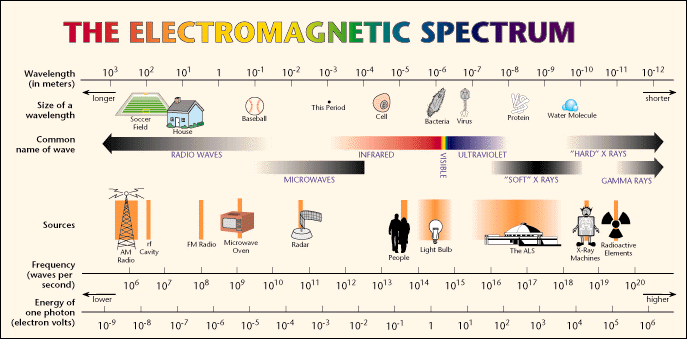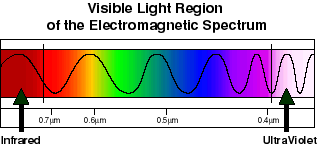What is Sunlight?

Before we learn why the sky is blue we
need to know what sunlight
actually is. The light from the sun is made up of particles, called
photons. These photons travel in electromagnetic waves from the sun to
the earth. There is a wide spectrum of electromagnetic waves that are
emitted from the sun, but only a minute portion of this spectrum is
visible to the human eye, this portion is known as the visible
light spectrum.
The color of light
that we see is
determined by a photon's wave length. A photon that moves with a larger
wavelength is seen as a "red photon" while a photon that moves with a
smaller wavelength is seen as a "blue photon". The figure below
demonstrates the different size wavelengths for the different colors.
You can remember the different
colors that are displayed in the visible light spectrum by using the
acronym, "ROY G BIV". Which stands for
red, orange, yellow, green, blue, indigo and violet.
When we observe the light from the sun
we do not see red, green,
blue, and violet rays of light, we see sunlight as white rays of light.
These white rays of light are actually made up of all the wavelengths
of color combined.

We can demonstrate
this by shining
sunlight through a prism. When we do so the white sun light is broken
up into the entire visible spectrum of light.
It is this effect that cause us to see a
rainbow as well. After a
rainstorm, the droplets of rain that are suspened in the air act as
prisms and when the sunlight hits the droplets at the correct angle a
rainbow occurs!




 http://www.phys.virginia.edu/Education/outreach/8thgradesol/ElectromagSpect.htm
http://www.phys.virginia.edu/Education/outreach/8thgradesol/ElectromagSpect.htm


